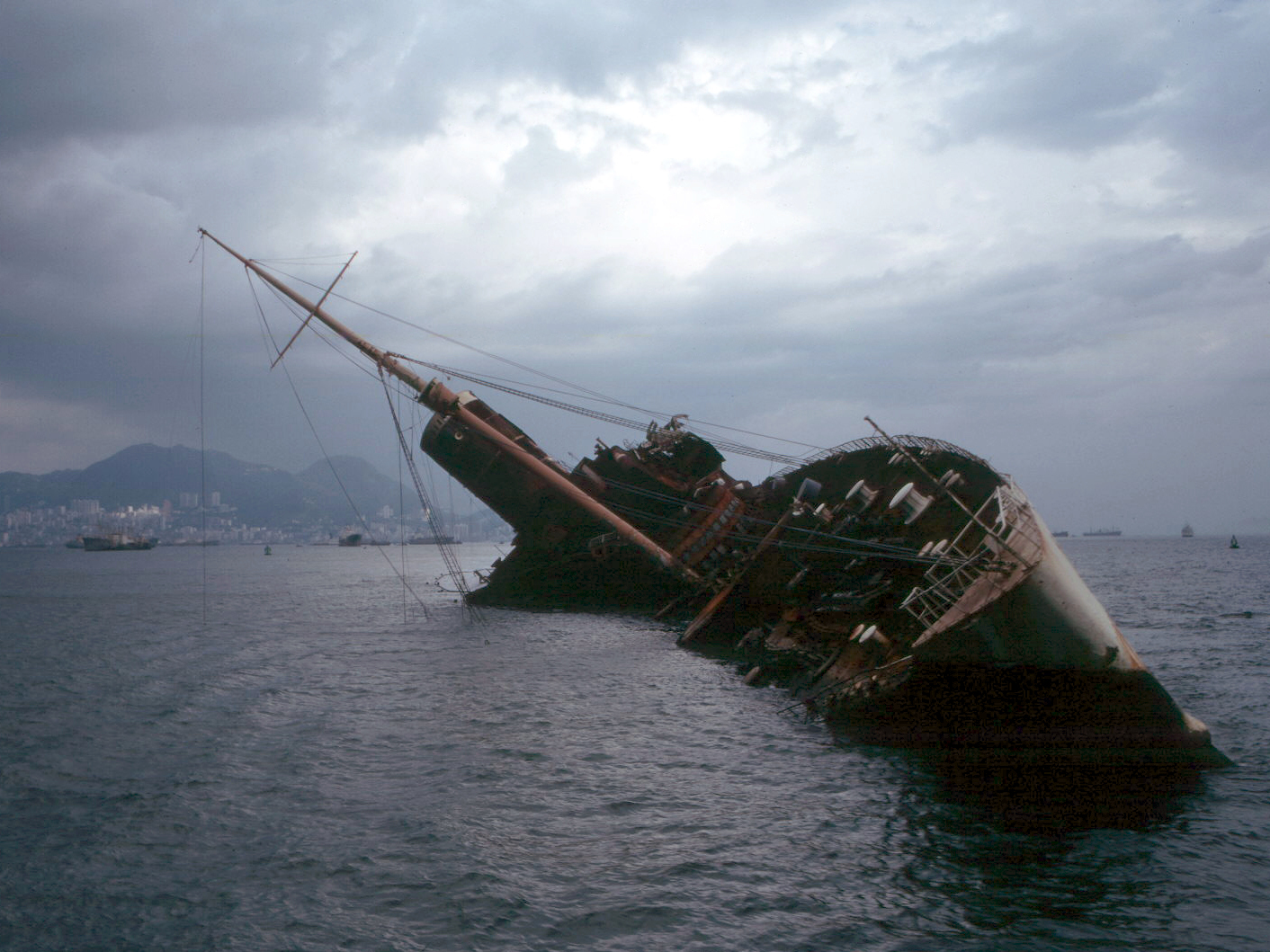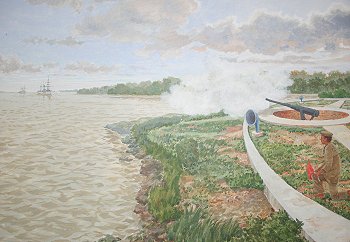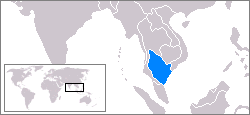|
Phasi Charoen Canal
Khlong Phasi Charoen ( th, คลองภาษีเจริญ, ) is a canal west of the Chao Phraya River in the Thonburi area of the Bangkok conurbation. The canal links the Tha Chin River to Khlong Bangkok Yai. It starts at Khlong Bangkok Yai near '' Wat Paknam Bhasicharoen'', Bangkok and ends south of ''Wat Ang Thong'', Tambon Don Kai Di, Krathum Baen District, Samut Sakhon Province. It is approximately long. The canal project was initiated by Phra Phasi Sombat Boriboon (พระภาษีสมบัติบริบูรณ์), who later became Phraya Phison Sombat Boriboon (พระยาพิสณฑ์สมบัติบริบูรณ์). Originally Phasi Charoen proposed to fund the project in exchange for the right to collect tolls. It was approved by King Mongkut (Rama IV). Its 112,000 baht cost was financed via tax deductions from the amount Phra Phasi Sombat Boriboon collected, thus making the canal toll-free. Construction began in 1866 and ... [...More Info...] [...Related Items...] OR: [Wikipedia] [Google] [Baidu] |
Mongkut
Mongkut ( th, มงกุฏ; 18 October 18041 October 1868) was the fourth monarch of Siam (Thailand) under the House of Chakri, titled Rama IV. He ruled from 1851 to 1868. His full title in Thai was ''Phra Bat Somdet Phra Menthora Ramathibodi Sri Sinthara Mahamakut Phra Mongkut Phra Siam Deva Mahamakut Wittaya Maharaj'' (พระบาทสมเด็จพระปรเมนทรรามาธิบดีศรีสินทรมหามงกุฎ พระจอมเกล้าเจ้าอยู่หัว พระสยามเทวมหามกุฏวิทยมหาราช). Outside Thailand, Mongkut is best known as the king in the 1951 musical and 1956 film ''The King and I'', based on the 1946 film '' Anna and the King of Siam''in turn based on a 1944 novel by an American author about Anna Leonowens' years at his court, from 1862 to 1867, drawn from Leonowens’ memoir. Siam first felt the pressure of Western expansionism during Mongku ... [...More Info...] [...Related Items...] OR: [Wikipedia] [Google] [Baidu] |
Khlong Phasi Charoen Boat Service
The Khlong Phasi Charoen Express Boat service operates an 11 kilometre route on the Khlong Phasi Charoen in Bangkok. The service has been in operation since 1 April 2016 to alleviate road traffic in the area and is currently operated by Krungthep Thanakom PCL. It runs from Phetkasem 49 Pier to Wat Paknam Phasi Charoen Pier. The Bangkok Metropolitan Administration (BMA) has built a walkway from Bang Wa Pier to Bang Wa Station of the BTS Skytrain. It operates only during peak hours between 06:00–09:00 and 16:00–19:30 at 15-minute intervals on weekdays and 30-minute intervals on weekends. Piers # Pratunam Phasi Charoen # U Rot May Sai 9 # Saphan Pracharat # Bang Wa – connection to Bang Wa station ( BTS, MRT) # Wat Ang Kaew # Phetkasem 31 # Wat Rang Bua # Phetkasem 35 # Phetkasem 27 # Phetkasem 39 # Wat Nimmanoradee # ID Bang Khae # Kaset-Bang Khae # Phetkasem 41 # Kanchanaphisek Bridge # Muban Suksan 6 # Phetkasem 53 # Wat Muang # Chumchon Ban Khing # Phetkasem 69 An addit ... [...More Info...] [...Related Items...] OR: [Wikipedia] [Google] [Baidu] |
The Man With The Golden Gun (film)
''The Man with the Golden Gun'' is a 1974 spy film and the ninth in the ''James Bond'' series produced by Eon Productions, and the second to star Roger Moore as the fictional MI6 agent James Bond. A loose adaptation of Ian Fleming's posthumously published 1965 novel of the same name, the film has Bond sent after the Solex Agitator, a breakthrough technological solution to contemporary energy shortages, while facing the assassin Francisco Scaramanga, the "Man with the Golden Gun". The action culminates in a duel between them that settles the fate of the Solex. ''The Man with the Golden Gun'' was the fourth and final film in the series directed by Guy Hamilton. The script was written by Richard Maibaum and Tom Mankiewicz. The film was set in the face of the 1973 energy crisis, a dominant theme in the script; Britain had still not yet fully overcome the crisis when the film was released in December 1974. The film also reflects the then-popular martial arts film craze, with se ... [...More Info...] [...Related Items...] OR: [Wikipedia] [Google] [Baidu] |
Chulalongkorn
Chulalongkorn ( th, จุฬาลงกรณ์, 20 September 1853 – 23 October 1910) was the fifth monarch of Siam under the House of Chakri, titled Rama V. He was known to the Siamese of his time as ''Phra Phuttha Chao Luang'' (พระพุทธเจ้าหลวง, the Royal Buddha). Chulalongkorn's reign was characterised by the modernisation of Siam, governmental and social reforms, and territorial concessions to the British and French. As Siam was surrounded by European colonies, Chulalongkorn, through his policies and acts, ensured the independence of Siam. All his reforms were dedicated to ensuring Siam's independence given the increasing encroachment of Western powers, so that Chulalongkorn earned the epithet ''Phra Piya Maharat'' (พระปิยมหาราช, the Great Beloved King). Early life King Chulalongkorn was born on 20 September 1853 to King Mongkut and Queen Debsirindra and given the name Chulalongkorn. In 1861, he was designated ' ... [...More Info...] [...Related Items...] OR: [Wikipedia] [Google] [Baidu] |
Paknam Incident
The Paknam Incident was a military engagement fought during the Franco-Siamese War in July 1893. While sailing off Paknam on Siam's Chao Phraya River, three French ships violated Siamese territory and a Siamese fort and a force of gunboats fired warning shots. In the ensuing battle, France won and blockaded Bangkok, which ended the war. Background Conflict arose when the French Navy ''Inconstant'' and ''Comete'' gunboats arrived on July 13 at Paknam with the intention of crossing the bar into the Chao Phraya River and join the French gunboat ''Lutin'' already anchored off the French embassy in Bangkok. The Siamese forbade the French gunboats to cross the bar, a contravention of the Franco-Siamese Treaty of 1856 which permitted the French free passage up as far as Paknam Island. The French commander, Captain Borey, did not receive a telegram of updated instructions from Paris to hold his position at the mouth of the river, as it was not received by the French consul Augu ... [...More Info...] [...Related Items...] OR: [Wikipedia] [Google] [Baidu] |
Gulf Of Thailand
The Gulf of Thailand, also known as the Gulf of Siam, is a shallow inlet in the southwestern South China Sea, bounded between the southwestern shores of the Indochinese Peninsula and the northern half of the Malay Peninsula. It is around in length and up to in width, and has a surface area of . The gulf is surrounded on the north, west and southwest by the coastlines of Thailand (hence the name), on the northeast by Cambodia and the Mekong Delta region of Vietnam, and opens to the South China Sea in the southeast. Names The modern Thai name of the gulf is ''Ao Thai'' ( th, อ่าวไทย, , 'Thai Gulf') and "Gulf of Thailand" has been adopted as the official name of the body by the International Hydrographic Organization. Its name in Malay is he "Gulf of Siam", ''Teluk Siam'', and in km, ឈូងសមុទ្រសៀម'', Chhoung Samut Siem''. In Thai, the gulf is historically known as ''Ao Sayam'' ( th, อ่าวสยาม). In Vietnamese it is known a ... [...More Info...] [...Related Items...] OR: [Wikipedia] [Google] [Baidu] |
Thai Baht
The baht (; th, บาท, ; currency sign, sign: ฿; ISO 4217, code: THB) is the official currency of Thailand. It is divided into 100 ''satang'' (, ). The issuance of currency is the responsibility of the Bank of Thailand. Society for Worldwide Interbank Financial Telecommunication, SWIFT ranked the Thai baht as the 10th-most-frequently used world payment currency as of January 2019. History The Thai baht, like the Pound (currency), pound, originated from a traditional unit of mass. Its currency value was originally expressed as that of silver of corresponding weight (now defined as 15 grams), and was in use probably as early as the Sukhothai Kingdom, Sukhothai period in the form of bullet coins known in Thai as ''phot duang''. These were pieces of solid silver cast to various weights corresponding to a Thai units of measurement, traditional system of units related by simple fractions and multiples, one of which is the ''baht (unit), baht''. These are listed in the follo ... [...More Info...] [...Related Items...] OR: [Wikipedia] [Google] [Baidu] |
Canal
Canals or artificial waterways are waterways or engineered channels built for drainage management (e.g. flood control and irrigation) or for conveyancing water transport vehicles (e.g. water taxi). They carry free, calm surface flow under atmospheric pressure, and can be thought of as artificial rivers. In most cases, a canal has a series of dams and locks that create reservoirs of low speed current flow. These reservoirs are referred to as ''slack water levels'', often just called ''levels''. A canal can be called a ''navigation canal'' when it parallels a natural river and shares part of the latter's discharges and drainage basin, and leverages its resources by building dams and locks to increase and lengthen its stretches of slack water levels while staying in its valley. A canal can cut across a drainage divide atop a ridge, generally requiring an external water source above the highest elevation. The best-known example of such a canal is the Panama Canal. Many ... [...More Info...] [...Related Items...] OR: [Wikipedia] [Google] [Baidu] |
Krathum Baen District
Krathum Baen (, ) is a district ('' amphoe'') in the northern part of Samut Sakhon province, central Thailand. History Krathum Baen was a part of Mueang Samut Sakhon district. It was created in 1900. In 1926 the government added Tambons Tha Mai, Bang Yang, Nong Kok Khai, and Om Noi of Sam Phran district, Nakhon Pathom province to the district. Geography Neighbouring districts are (from the north clockwise): Sam Phran of Nakhon Pathom province; Nong Khaem and Bang Bon of Bangkok; Mueang Samut Sakhon and Ban Phaeo of Samut Sakhon Province. The important water resources are the Tha Chin river and Phasi Charoen canal. The name ''Krathum Baen'' meaning 'flat burflower-tree'. Administration The district is divided into 10 subdistricts (''tambons''), which are further subdivided into 76 villages ('' mubans''). There is a city (''thesaban nakhon''), Om Noi, and a town (''thesaban mueang Thesaban ( th, เทศบาล, , ) are the municipalities of Thailand. There ar ... [...More Info...] [...Related Items...] OR: [Wikipedia] [Google] [Baidu] |
Tambon Don Kai Di
Don Kai Di ( th, ดอนไก่ดี, ) is a '' tambon'' (sub-district) in Krathum Baen District, Samut Sakhon Province, outskirts Bangkok. History Its name "Don Kai Di", directly translated as "upland of good roosters", because locals prefer to raise fighting cocks. Don Kai Di is considered the tip of Khlong Phasi Charoen before it empties to confluence the Tha Chin River at Ang Thong Watergate near local temple Wat Ang Thong. In the past, in case of flood water came from Bangkok, it would be diverted to the sea via Tha Chin River. They will open watergates all the time so the water of Khlong Phasi Charoen was clear. As time passes, there are a number of plants along the canal. Most of them discharge wastewater here. Water in Kathum Baen and Don Kai Di is polluted. With all factories, Samut Sakhon turned into an industrial city. Don Kai Di is home to the Thai of Chinese descent which has inherited until today. ''Benjarong'' (a traditional Thai five-coloured porcelai ... [...More Info...] [...Related Items...] OR: [Wikipedia] [Google] [Baidu] |






